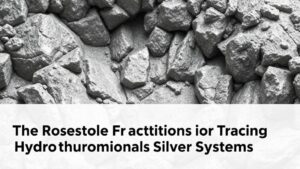Spotting Ancient River Meanders That Could Host Hidden Gold Deposits
Spotting Ancient River Meanders That Could Host Hidden Gold Deposits
The quest for gold has driven exploration and mining for centuries. Among various geological formations, ancient river meanders have gained attention due to their potential to conceal significant gold deposits. This article delves into the processes that create these geological features, the methods used to identify them, and the real-world implications for gold prospecting.
Understanding River Meanders
A river meander is a sinuous curve or bend in a rivers path, typically formed by the natural erosion of riverbanks over time. dynamic flow of water creates areas of deposition on the inside of bends and erosion on the outside. This process contributes to the formation of point bars, which are essential for understanding gold deposits in ancient meanders.
Meandering rivers often shift their courses, leaving behind abandoned channels known as oxbow lakes. These features serve as crucial indicators of past river dynamics and can harbor valuable resources, such as gold. Studies suggest that fluvial environments are particularly rich in alluvial gold deposits due to the continuous sorting of sediments by flowing water.
Geological and Environmental Indicators
Identifying potential gold-bearing meanders involves assessing several geological and environmental factors:
- Types of Bedrock: Gold is commonly found in quartz veins associated with certain types of bedrock, including schists and gneisses.
- Soil Composition: Rich alluvial soils, often consisting of quartz and clay, can suggest previous geological activity conducive to gold deposition.
- Historical Mining Activities: Regions with a history of mining can provide clues about the likelihood of gold deposits in nearby ancient river systems.
Methods for Spotting Ancient River Meanders
Utilizing a combination of remote sensing, geological surveys, and topographic analysis, researchers and prospectors can effectively locate ancient river meanders. Some common techniques include:
- Aerial Imagery: High-resolution satellite images can reveal meandering patterns, allowing for the identification of old riverbeds.
- Geographic Information Systems (GIS): GIS tools enable the mapping of historical river courses by analyzing terrain elevation and sediment deposition.
- Ground Penetrating Radar (GPR): GPR technology helps to detect buried river channels and point bars, providing insights into their potential for gold deposits.
Case Studies: Successes in Gold Prospecting
Several regions worldwide have successfully leveraged the knowledge of ancient river systems to uncover hidden gold deposits:
- Californias Sierra Nevada: Gold was discovered in the 1840s, leading to extensive exploration of ancient river channels and terraces.
- The Klondike Region, Canada: The famous Klondike Gold Rush was driven by prospectors understanding of ancient river meanders that deposited gold into their modern counterparts.
These historical examples highlight the effectiveness of studying ancient river systems. They demonstrate how the knowledge of geological processes can lead to substantial economic opportunities.
Challenges and Considerations
While there are tremendous opportunities in exploring ancient river meanders, potential challenges must be taken into account:
- Environmental Regulations: Areas with significant ecological value are often protected, limiting access for exploration.
- Technical Limitations: Accessing remote or underwater meanders can pose logistical challenges.
Prospectors need to remain aware of these factors and collaborate with environmental and geological experts to navigate them effectively.
Actionable Takeaways
Prospecting for gold in ancient river meanders requires a blend of geological knowledge, advanced technology, and research. Here are key actions for prospective gold seekers:
- Conduct comprehensive geological surveys in areas with potential meandering river systems.
- Use drone and satellite technologies for aerial imagery and mapping.
- Engage with local geologists or join prospecting organizations to access collective knowledge and experience.
By following these guidelines, gold prospectors can enhance their chances of discovering hidden gold deposits in the ancient meanders of rivers, turning geological insights into tangible rewards.


